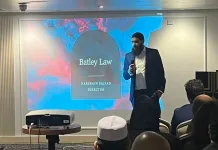Councillor Jonathan Pryor, Leeds City Council executive member for learning, skills, employment and equality, said:
“Last week, the Government declared which year group cohorts (Nursery, Reception, Year 1 and Year 6) can return to school from June 1 at the earliest, joining those pupils who have been eligible to attend school throughout the past two months (vulnerable children and children of key workers). The Government has stated that when pupils return, they should be in school full-time and schools should avoid rotating year groups.
“At Leeds City Council, we believe that it is important for children to resume their education so they can learn and interact with their peers. However, this needs to be done in such a way that we minimise the risks to pupils, staff and parents as much as possible.
Due to a variety of factors, it would be impossible for all schools to operate to the Government’s timetable of opening Reception, Year 1 and Year 6 from June 1. While some schools will begin to gradually expand their intake from this date, Leeds will not expect all our schools to open to all those pupils from day one.
“To decide what is feasible, we are asking schools to carry out an initial comprehensive risk assessment so that leaders can evaluate potential solutions on how they can safely and effectively accommodate eligible pupils. We want schools, in the first instance, to take a phased approach to how many pupils they take back and from when.
“Schools have different numbers of vulnerable and key worker children, different numbers of staff who will not be able to attend school in person because they or a family member are in a vulnerable category and therefore shielding, and different abilities to implement social distancing.
“We can expect therefore, that there will not be one city-wide model for the initial phased re-opening of schools. However, Leeds City Council will support schools to work towards gradually increasing pupil numbers at a pace their individual circumstances allow.
“We still require some clarifications and actions from the Government before numbers returning to schools can substantially increase. We have consistently asked for the scientific advice that has informed the Government’s position, and demand that this is published immediately.
“Schools must have guidance and flexibility around the appropriate levels of social distancing as each will have a different layout.
“Staff must have access to comprehensive and regular testing – linked into a local tracing programme – for themselves and pupils.
“The Government must give staff who are social distancing because they, or those they live with, are in vulnerable categories, guarantees that they can continue to work from home and not expect them to physically come into school.
“We support the Local Government Association’s call for local authorities to be given the power to close any school where there is a COVID-19 outbreak. Given the disparate rates of ‘R’ across the country, it is right that this power should sit locally and be done in consultation with Directors of Public Health.
“And, finally the new case count must be much lower than it currently is, with a sustained downward trend.
“We are working in consultation with schools and the Department for Education to gain answers to our remaining questions.
“It is important to note that schools have been open throughout the past two months, providing education in person for vulnerable children and key workers’ children – in addition to providing education and pastoral care to those children at home. This has been a phenomenal task and we thank everyone involved.
“We understand this is a difficult time for parents and recognise the urgency to return children to education. This urgency should not overlook local level factors, nor should it be done until these points have been addressed. Staff and pupil safety must be at the heart of all decision making, and we should keep decisions under constant review.”















